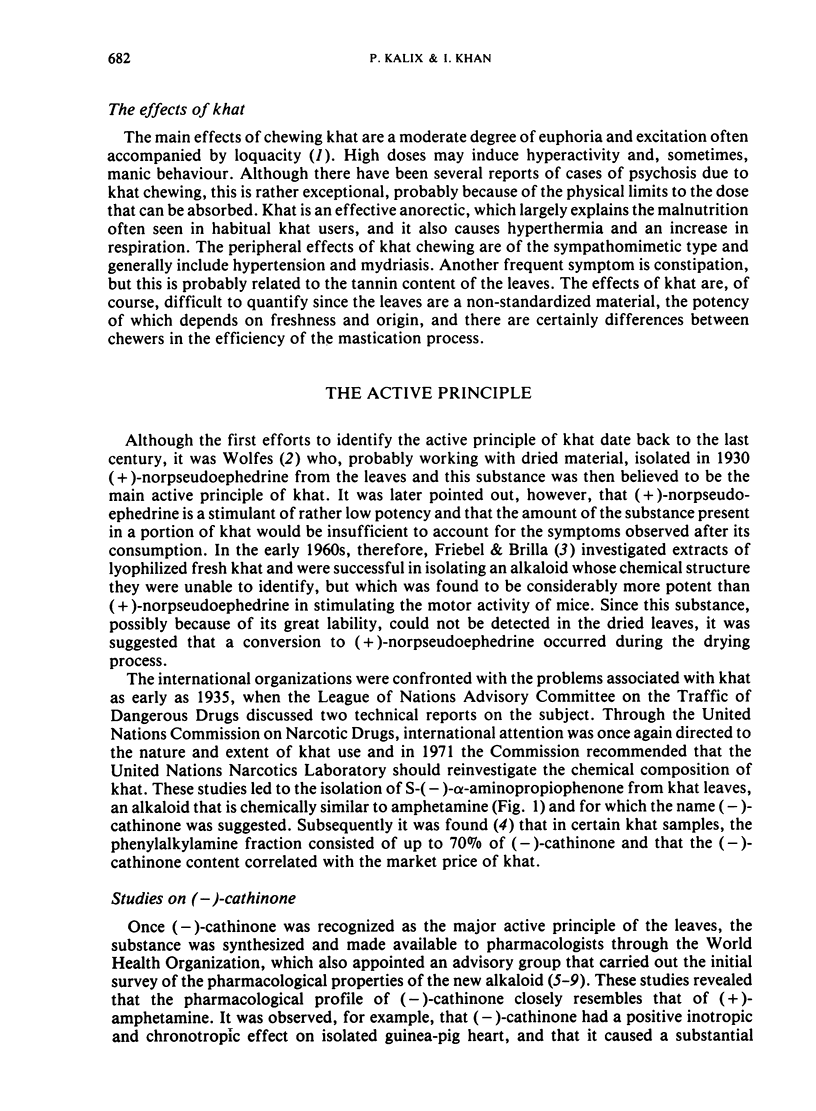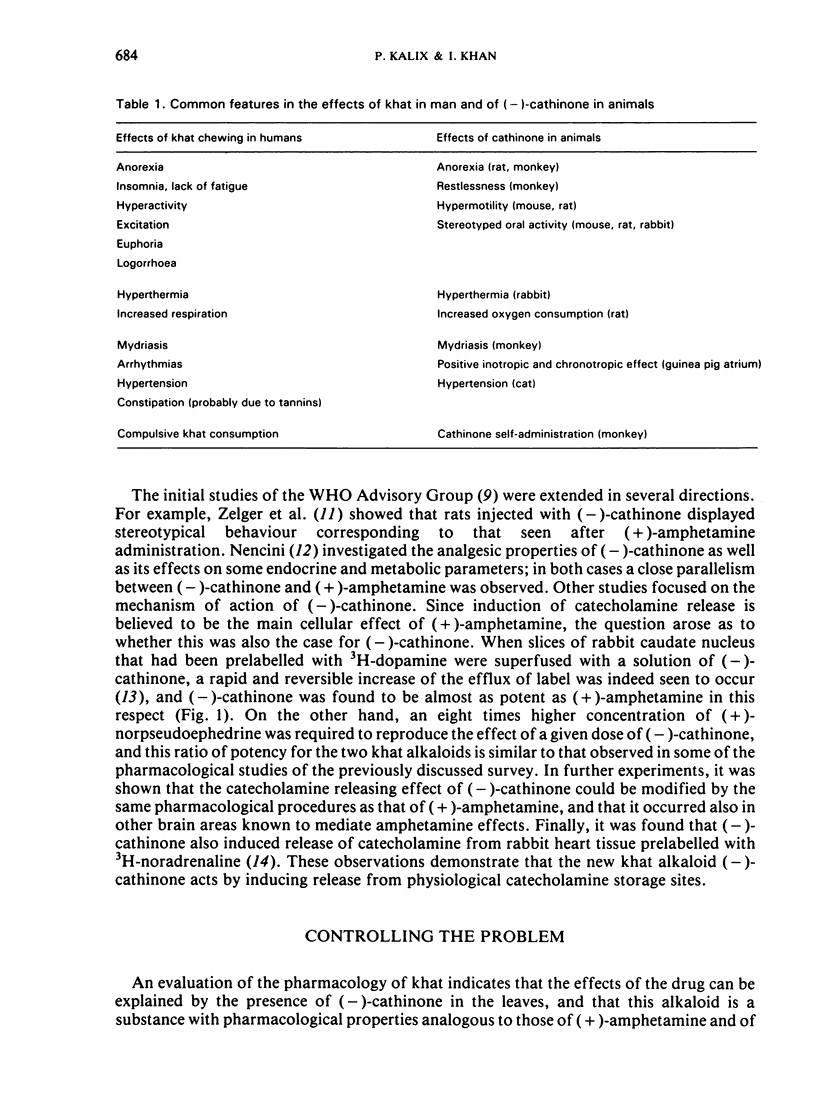Abstract
The chewing of leaves of the khat shrub is common in certain countries of East Africa and the Arabian peninsula, and many khat users are subject to psychic dependence on the drug. The syndrome observed after khat consumption is characterized by a certain degree of CNS stimulation and by sympathomimetic effects; it is reminiscent of that induced by amphetamine.
Recently, the alkaloid (-)-cathinone has been isolated from khat leaves and this substance produces effects in animals that are analogous to those of (+)-amphetamine and that correlate well with the effects observed in humans after khat consumption. Furthermore, it has been shown that (-)-cathinone acts by the same mechanism as (+)-amphetamine, i.e., by inducing release at physiological catecholamine storage sites. Taken together, these studies indicate that khat must be considered an amphetamine-like material.
Full text
PDF





Selected References
These references are in PubMed. This may not be the complete list of references from this article.
- Foltin R. W., Schuster C. R. Behavioral tolerance and cross-tolerance to dl-cathinone and d-amphetamine in rats. J Pharmacol Exp Ther. 1982 Jul;222(1):126–131. [PubMed] [Google Scholar]
- Halbach H. Medical aspects of the chewing of khat leaves. Bull World Health Organ. 1972;47(1):21–29. [PMC free article] [PubMed] [Google Scholar]
- Kalix P. A constituent of khat leaves with amphetamine-like releasing properties. Eur J Pharmacol. 1980 Nov 21;68(2):213–215. doi: 10.1016/0014-2999(80)90326-x. [DOI] [PubMed] [Google Scholar]
- Kalix P. Effect of the alkaloid (-) cathinone on the release of radioactivity from rabbit atria prelabelled with 3H-norepinephrine. Life Sci. 1983 Feb 14;32(7):801–807. doi: 10.1016/0024-3205(83)90316-8. [DOI] [PubMed] [Google Scholar]
- Knoll J. Studies on the central effects of (-)cathinone. NIDA Res Monogr. 1979;27:322–323. [PubMed] [Google Scholar]
- Nencini P. Cathinone, active principle of the khat leaf: its effects on in vivo and in vitro lipolysis. Pharmacol Res Commun. 1980 Oct;12(9):855–861. doi: 10.1016/s0031-6989(80)80048-8. [DOI] [PubMed] [Google Scholar]
- Rosecrans J. A., Campbell O. L., Dewey W. L., Harris L. S. Discriminative stimulus and neurochemical mechanism of cathinone: a preliminary study. NIDA Res Monogr. 1979;27:328–329. [PubMed] [Google Scholar]
- Schuster C. R., Johanson C. E. Behavioral studies on cathinone in monkeys and rats. NIDA Res Monogr. 1979;27:324–325. [PubMed] [Google Scholar]
- Zelger J. L., Schorno H. X., Carlini E. A. Behavioural effects of cathinone, an amine obtained from Catha edulis Forsk.: comparisons with amphetamine, norpseudoephedrine, apomorphine and nomifensine. Bull Narc. 1980;32(3):67–81. [PubMed] [Google Scholar]


